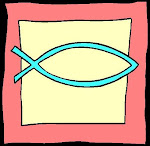 Riffles, runs and pools are terms used to describe the dynamics of fishable water. A riffle is a short section of fast moving shallow water with a generally rocky bottom. Riffles can form feeding lanes for trout as the stream brings the food to the trout. There is also good aeration of the water in a riffle. I have found some surprisingly large trout in the shallowest of water. Runs are formed when riffles deepen and the water current slows. Trout can be found in runs where the water slows after a riffle. Pools are found in the deepest portion of the stream where the water velocity has slowed considerably. Big browns love to hold in these deep slow-moving lies and can especially be found near the undercut banks. A seam is the edge of two different water currents and makes a good hold for trout. Pay attention to the moving water next time you’re out fishing the river; the trout do!
Riffles, runs and pools are terms used to describe the dynamics of fishable water. A riffle is a short section of fast moving shallow water with a generally rocky bottom. Riffles can form feeding lanes for trout as the stream brings the food to the trout. There is also good aeration of the water in a riffle. I have found some surprisingly large trout in the shallowest of water. Runs are formed when riffles deepen and the water current slows. Trout can be found in runs where the water slows after a riffle. Pools are found in the deepest portion of the stream where the water velocity has slowed considerably. Big browns love to hold in these deep slow-moving lies and can especially be found near the undercut banks. A seam is the edge of two different water currents and makes a good hold for trout. Pay attention to the moving water next time you’re out fishing the river; the trout do!Tuesday, May 19, 2009
Riffles, Runs, and Pools
 Riffles, runs and pools are terms used to describe the dynamics of fishable water. A riffle is a short section of fast moving shallow water with a generally rocky bottom. Riffles can form feeding lanes for trout as the stream brings the food to the trout. There is also good aeration of the water in a riffle. I have found some surprisingly large trout in the shallowest of water. Runs are formed when riffles deepen and the water current slows. Trout can be found in runs where the water slows after a riffle. Pools are found in the deepest portion of the stream where the water velocity has slowed considerably. Big browns love to hold in these deep slow-moving lies and can especially be found near the undercut banks. A seam is the edge of two different water currents and makes a good hold for trout. Pay attention to the moving water next time you’re out fishing the river; the trout do!
Riffles, runs and pools are terms used to describe the dynamics of fishable water. A riffle is a short section of fast moving shallow water with a generally rocky bottom. Riffles can form feeding lanes for trout as the stream brings the food to the trout. There is also good aeration of the water in a riffle. I have found some surprisingly large trout in the shallowest of water. Runs are formed when riffles deepen and the water current slows. Trout can be found in runs where the water slows after a riffle. Pools are found in the deepest portion of the stream where the water velocity has slowed considerably. Big browns love to hold in these deep slow-moving lies and can especially be found near the undercut banks. A seam is the edge of two different water currents and makes a good hold for trout. Pay attention to the moving water next time you’re out fishing the river; the trout do!Monday, May 11, 2009
The Canoe

It is said that God gave the idea for the shape of the canoe to the Native Americans. No other vessel has such graceful and alluring lines. No other vessel evokes such a time-worn image of wilderness exploration. No other vessel can track so well across a large open lake yet, gracefully wind its way down a river and still be easily portaged to the next put in. Its agility does not negate its load carrying ability. My canoe will hold 750lbs., a tremendous amount of weight, and float in about 8 inches of water! Fly fishing from a canoe provides one with an elevated seat that enables better casting without the need for a longer rod to lift line off of the water. Sitting higher off the water also makes for increased visibility and seeing more fish usually means catching more fish! Read more here.....
Saturday, May 2, 2009
The Approach
A successful presentation depends on your ability to plan and execute a cautious approach, keeping in mind the fish's cone of vision and feeding zone. Remember, the trout uses a variety of senses to detect predators and as fly fishermen, we are the predator.The trout can not only see you and hear you, but also can feel your presence through vibrations that communicate to his lateral line and warn him of impending danger of which the other senses may fail to warn. Plan your approach, taking the above into account before you attack. Walk softly and by all means, carry that big stick!
Subscribe to:
Posts (Atom)


